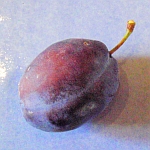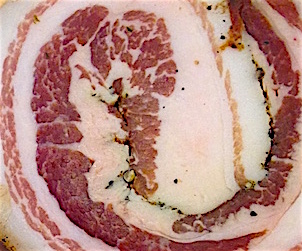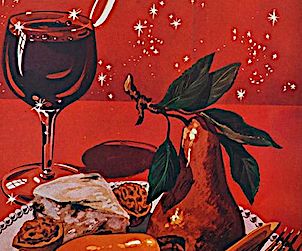by Malcolm Jolley
Just as the gastronome dreams of dinner at lunch, she dreams of tomato salad in the dead of winter and stews in high heat of summer. Much of the popular epicurean imagination is caught up in the foods of the extreme ends of seasons. When attention is turned to the transitory season, then spring seems to win: it’s hard not to succumb to the beauty of the very first spear of asparagus, or the first small strawberry. Fall is all turkey and squash; culturally driven foods, which demand their place on the Thanksgiving table. But what about now?
The first three weeks of September are technically still summer, but the presence of fall begins to be felt. One day it’s hot and muggy, the next it’s cool and grey. Grocery shelves and market stands are still abundant. There are still fresh tomatoes and corn, salads and, now, chards and other deep greens. But there are also signs of the big shift: the first MacIntosh apples have appeared. And the last of the true summer fruit, prunus domestica or plums.
The plum’s place, as I have decided to put it, as the last fruit of summer is appropriate on many levels. Take its colour, the last on the spectrum that runs from infra-red to ultra-violet. (Plums share their hue with eggplants, the last vegetable of the summer.) Take also their size: there are no jumbo plums. Easily grasped in the hand, the plum’s physical modesty hints, I think, at its recognition of mortality and the end of verdant summer life. Finally, and most importantly, the plum is not a sweet fruit. There is always a note sourness in a plum. Sometimes just a millimetre of tartness between the skin and sweet flesh, but it’s almost always there: a balancing flavour to remind us of the cold winds on their way and to enjoy the sun on our face, while we still can.
Some fun facts about plums*:
– Plums are essentially just big cherries: there is no real biological difference between stone fruits like plums, cherries, apricots and peaches other than size.
– Notwithstanding my extremely salient point about plums’ violet colour, they also come in hues of yellow, red, orange and even green as in the English ‘Greengage’, thought by some as the sweetest.
– While we tend to eat varieties that were brought over by English colonists in the 17th Century, there are native North American varieties of plum, including the Prunus Nigra, which does well in Canada’s northern climes.
– The plums in ‘plum pudding’ and the one on Jack Horner’s thumb are more likely raisins, as the word ‘plum’ was used as a designation for all dried fruits until the 17th and 18th Centuries.
– Damson plums, many references to which well-read foodies will see in their British cookbooks, are especially tart and used mainly for cooking.
– For some diabolical reason, some clearly disturbed people dry out perfectly good fresh plums to make prunes.
* These have been taken largely from Alan Davidson’s masterpiece, The Oxford Companion to Food (1st Ed., 2004).
 Malcolm Jolley is the Managing Editor of Good Food Revolution and Executive Director of Good Food Media, the non-profit organization that publishes GFR. Follow him at twitter.com/malcolmjolley.
Malcolm Jolley is the Managing Editor of Good Food Revolution and Executive Director of Good Food Media, the non-profit organization that publishes GFR. Follow him at twitter.com/malcolmjolley.









Where, oh where, can I get damson plums in Southern Ontario? Whether to buy the fruit or the tree, please let me know! My Mom used to make jam from them, can’t find them anywhere anymore.
Ask the folks at the Harvest Wagon, I have seen them in season. Malcolm
What’s it take to bemcoe a sublime expounder of prose like yourself?